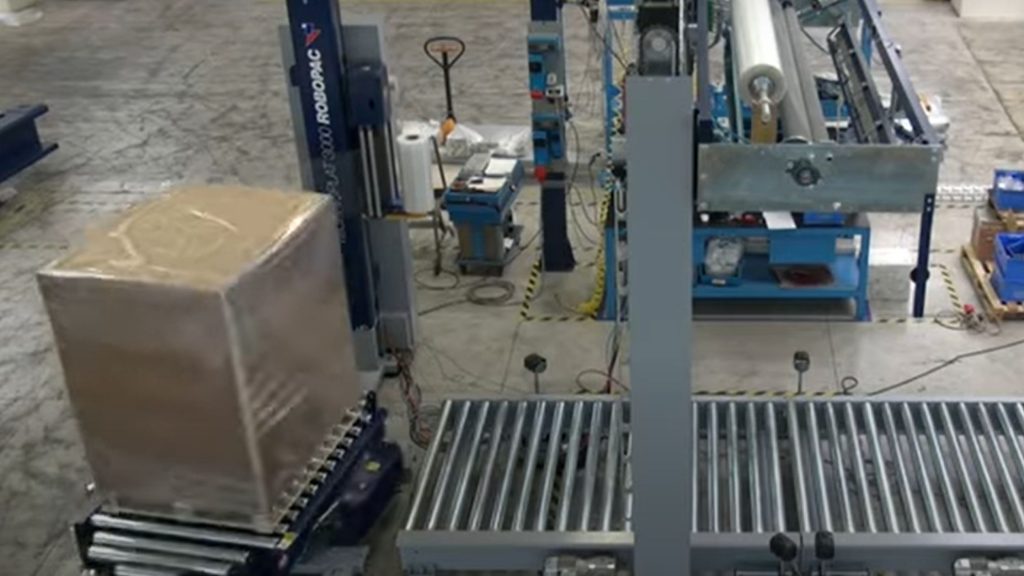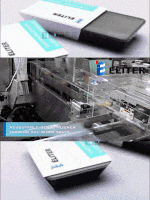Pallet wrapping machine: how to choose the right one?
2023-02-02
If you regularly work with pallets in your business, you should know what a pallet wrapper is, and the usefulness you could give it.

What is a pallet wrapper and what is it used for?
A pallet wrapping machine is a machine specially designed to quickly and efficiently wrap or wrap a pallet. Being wrapped, the pallet can be transported and stored safely and compactly, and that is why this technique is very common in the transport of goods.
Pallet wrappers, also known as pallet wrappers, are used in a wide variety of industries: food, construction, chemical, textile, etc. Depending on the size of the pallet and the complexity of its wrapping process, we can see wrapping machines of different types.
How is the pallet wrapping process carried out?
There are different ways on the market to wrap pallets using a baler, but the most common is to use film. It is a very flexible, resistant and economical material to wrap the goods to be transported and ensure the integrity of the pallet during the entire transport process.
Depending on the machine used, the wrapping process is done differently. There are machines that keep the pallet fixed while a moving element of it, such as a robotic arm, performs the wrapping process. On the other hand, there are machines that move the goods, through a rotating plate, for example, to apply the film and wrap the pallet.
Types of pallet wrappers
In the market we can find different types of wrapping machines, each of them designed to adapt to a specific production needs. Some of the most common types are:
Manual pallet wrappers
They are the most basic and economical. They are mainly used in small companies, or in processes where the wrapping needs are very low volume. These balers require an operator to load and stack the pallet in the machine.
Automatic pallet wrapping machines
They are machines that are integrated into an industrial automation process, in which the pallet is loaded automatically into the machine, and the wrapping process is carried out without operator intervention. They are ideal when you need to baling a large number of pallets in the shortest possible time, although they are more expensive than manual balers.
Advantages of using a pallet wrapping machine
Including a pallet wrapper in your end-of-line process will bring you numerous advantages, such as:
- Greater efficiency: the wrapping machines wrap large quantities of pallets quickly and accurately, significantly reducing the time and effort involved in performing this process manually.
- Cost savings: These machines help to reduce labor costs and increase the profitability of the company.
- Greater safety: by not requiring the intensive intervention of operators during the wrapping process, the risks of accidents or injuries are reduced.
- Better protection of the transported products: by wrapping the entire pallet in film, the products travel in a stable and safe way, reducing the risk of losses occurring.
How to choose the right pallet wrapper for your business
Once you have decided to implement a pallet wrapper in your packaging process, you may be overwhelmed by the number of different models and types of machines available.
What should you look at to choose the right machine?
- Size and production volume: If your company handles a large volume of pallets, it is advisable to opt for an automatic wrapping machine to increase the efficiency of your packaging process.
- Type and shape of the pallets: Depending on the size and shape of the pallet, it is likely that you will need a special baler specially designed to wrap pallets with those characteristics.
- Available space: Make sure you know the dimensions of the machine, in order to check if you have enough space on your packaging line to accommodate it.
- Maintenance: Always choose a supplier that gives you access to spare parts and a specialized technical service in case of breakdowns.
- Budget: Automatic balers require a higher initial investment, but they are also more efficient and will help you reduce costs in the long run.




